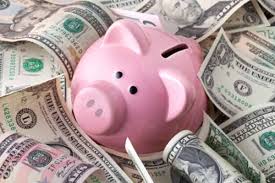The United States: An Economic Powerhouse Unveiled
The United States, a vast and diverse nation, stands prominently on the global stage as an economic superpower. The journey towards this status is an intricate tale of innovation, resilience, and a commitment to principles that underpin its economic prowess. In this exploration, we’ll delve into key aspects that define the United States as an economic giant, offering examples that high school students can easily comprehend.
Innovation and Entrepreneurship:
At the heart of the U.S. economic story is a culture of innovation and entrepreneurship. Imagine the United States as a giant laboratory where ideas sprout, grow, and sometimes transform the world. Silicon Valley, a hub for tech innovation, is like a wizard’s den where brilliant minds concoct magical solutions to everyday problems.
Take Apple Inc., for instance. Founded by Steve Jobs, Steve Wozniak, and Ronald Wayne in a garage, this company transformed the way we communicate and entertain ourselves. The iPhone, a sleek device that fits in your pocket, is not just a phone; it’s a music player, camera, and a gateway to a world of information. This is the power of American innovation, turning dreams into reality.
Global Trade and Consumer Power:
Picture the United States as a giant shopping mall where people from all over the world want to set up shop. American products are like the coolest gadgets and trendiest fashion items everyone desires. This is because the U.S. is not just a producer; it’s a consumer powerhouse. Walmart, the world’s largest retailer, is like a massive treasure trove where people can find everything from clothes to electronics at affordable prices.
When high school students buy a pair of sneakers from Nike, they’re participating in a global economic chain. The swoosh on those shoes symbolizes a brand that started in the U.S. but has a global footprint. The demand for American products worldwide makes the U.S. a central player in the international marketplace.
Natural Resources and Agricultural Dominance:
Think of the U.S. as a vast, fertile farm where fields stretch as far as the eye can see. American farmers are like modern-day wizards, using technology to grow more food than ever before. The country’s agricultural dominance isn’t just about growing food for its citizens but also for people around the world.
Consider the iconic American hamburger. It’s not just a tasty meal; it represents a complex supply chain. The beef may come from the U.S., the lettuce from Mexico, and the sesame seeds for the bun from somewhere else. This interconnectedness showcases the economic web the U.S. weaves globally through its abundance of natural resources and advanced agricultural practices.
Financial Power and the Stock Market:
Imagine Wall Street as a bustling carnival, but instead of rides, it’s filled with numbers, charts, and the excitement of financial transactions. The New York Stock Exchange (NYSE) is like the grand stage where companies go public, allowing people to own a piece of their favorite brands.
Take a company like Coca-Cola. When someone buys a can of Coke, they’re not just quenching their thirst; they’re participating in a system where millions of people invest in Coca-Cola through the stock market. The rise and fall of stock prices reflect the health of companies and, by extension, the U.S. economy. It’s like a giant economic rollercoaster ride where everyone is watching to see how high it can climb.
Education and Human Capital:
Think of the U.S. as a gigantic school where knowledge is the currency. American universities are like treasure chests, attracting students from all corners of the globe. Harvard, MIT, and Stanford are like academic wonderlands, producing thinkers, inventors, and leaders who shape the world.
Consider Bill Gates, the co-founder of Microsoft. He dropped out of college but used his passion for computers to build an empire. This highlights a unique aspect of the U.S. economy—it values not just degrees but also the drive and innovation that individuals bring to the table. The emphasis on education creates a workforce that’s not just skilled but also ready to think outside the box.
Government Policies and Economic Infrastructure:
Picture the U.S. government as a guardian overseeing a complex system. Policies are like rules that guide how the economic game is played. The Interstate Highway System, a network of roads connecting every corner of the country, is like a giant web facilitating the movement of goods and people.
When high school students see a UPS truck delivering packages, it’s not just a delivery; it’s a result of a well-connected transportation system. Government policies, like tax incentives for businesses, encourage companies to invest and grow. It’s like a set of rules that encourage players to score goals in the economic soccer match.
Cultural Influence and Soft Power:
Imagine the U.S. as a Hollywood blockbuster that everyone around the world wants to watch. American movies, music, and fashion are not just entertainment; they’re a form of cultural currency. Hollywood, with its iconic sign, is like a dream factory exporting stories that capture hearts globally.
Consider the influence of companies like Disney. When someone wears a Mickey Mouse shirt, they’re not just wearing a cartoon character; they’re participating in a global phenomenon. This cultural influence extends beyond entertainment to impact consumer choices, making American products desirable worldwide.
The United States, with its vibrant tapestry of innovation, global trade, agricultural abundance, financial prowess, emphasis on education, effective governance, and cultural influence, stands as an economic superpower. High school students, as future contributors to this economic giant, play a crucial role in shaping the nation’s ongoing narrative. Understanding these key elements provides a lens through which young minds can comprehend the intricate dance of factors that propels the U.S. to the forefront of the global economic stage.

